projects: plumbing
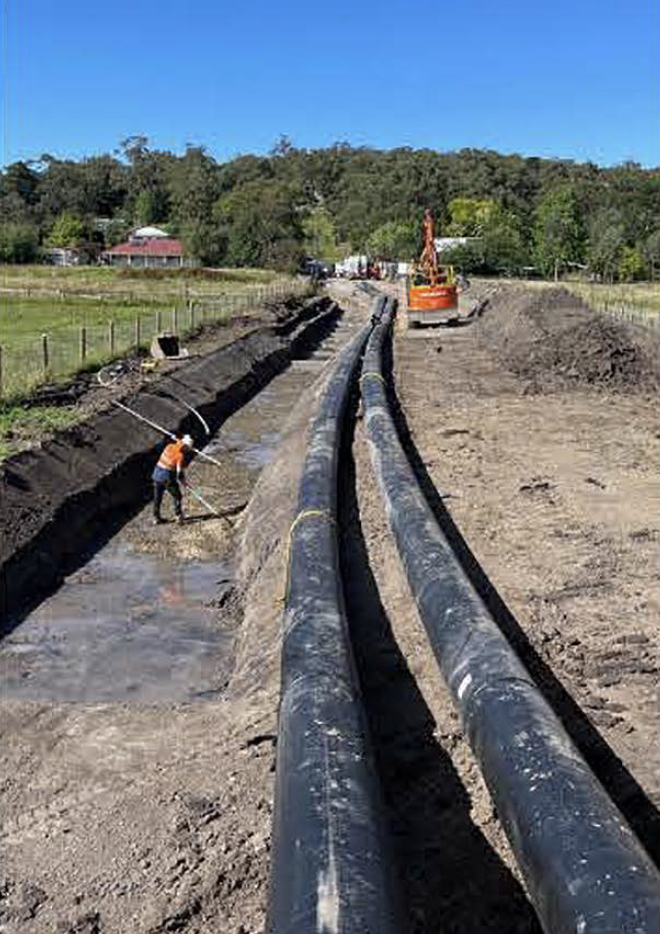
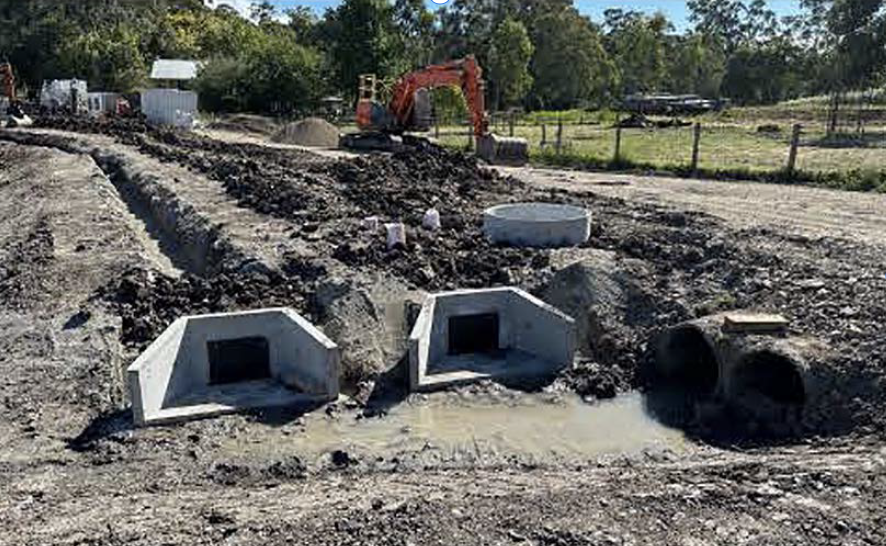
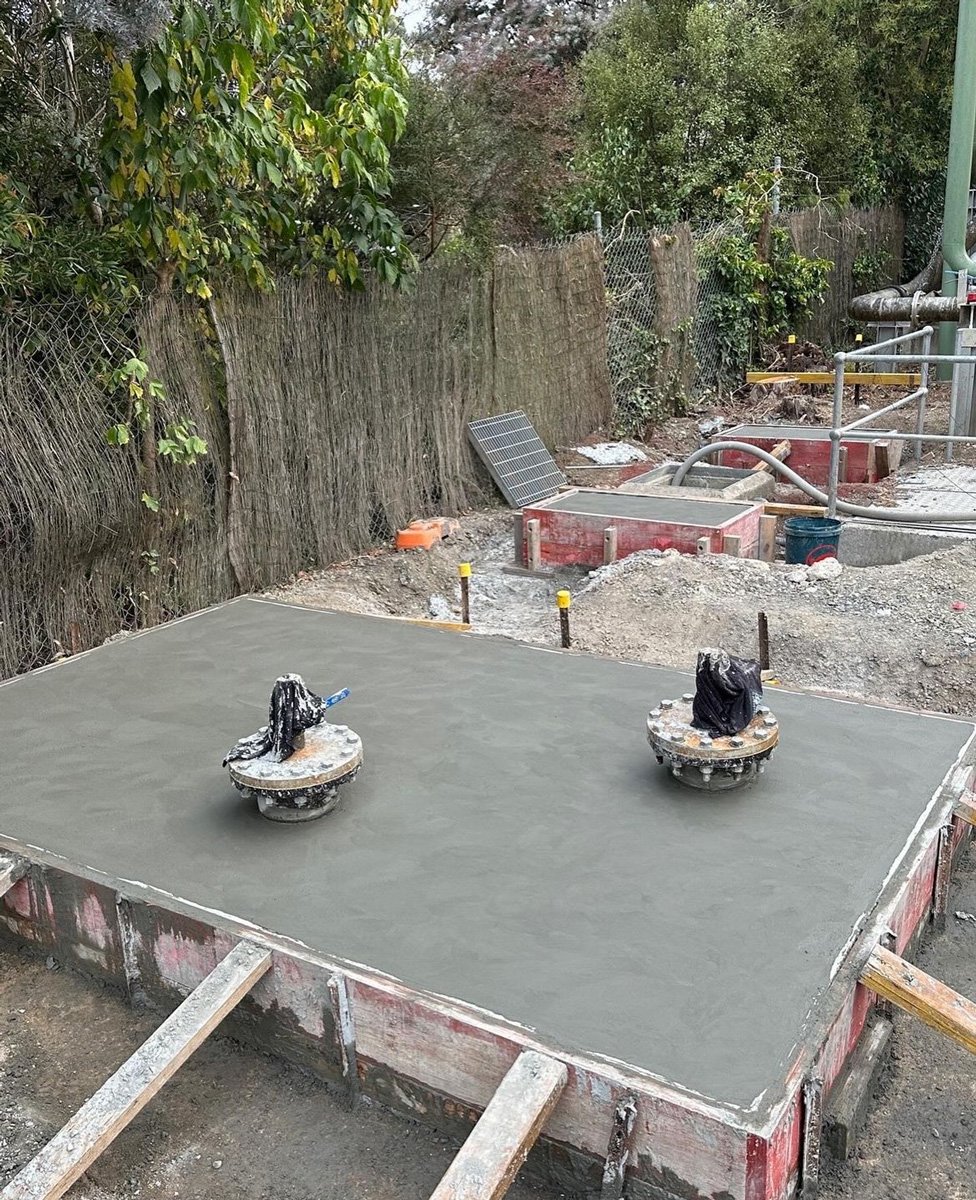
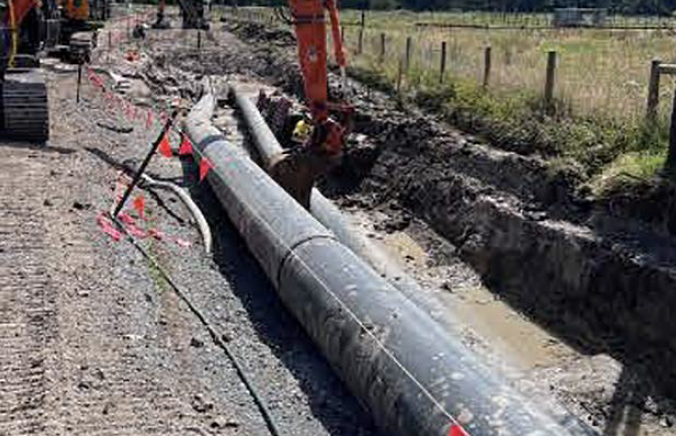
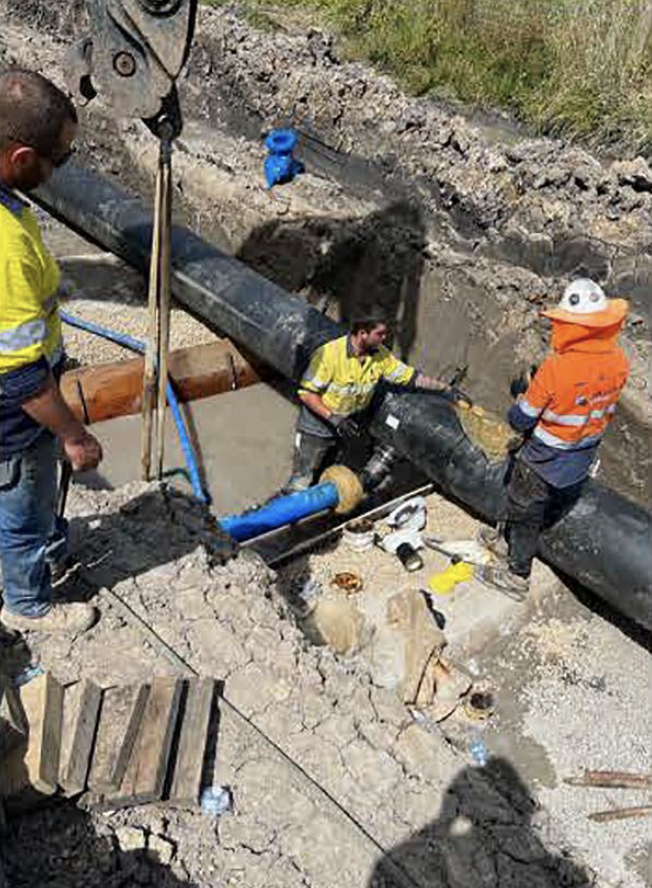
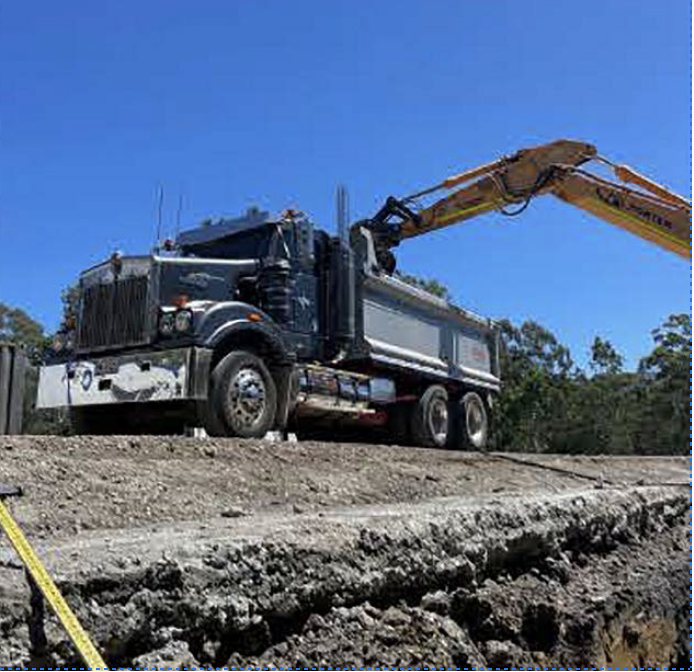
Yarra Junction contact pipe Chlorine dosing upgrade
Project overview
Currently, the Yarra Junction Treatment Plant has no backup system to continue supplying treated water if the on-site UV system fails. To address this, the proposed works will upgrade the chlorine dosing system and install an emergency backup to maintain water quality.
The scope includes modifying the existing chlorine dosing setup and installing a new emergency dosing point directly after the UV disinfection system. This will allow chlorine to be used as a primary treatment method if the UV becomes unavailable.
Key works include:
Installing an emergency chlorine dosing point immediately after UV treatment.
Relocating the main chlorine dosing points (duty/standby) to follow the emergency point.
Adjusting the chlorine analyser sample line to ensure accurate dosing control.
Adding a chlorine contact pipe, with all required fittings and valves, to allow enough contact time for proper disinfection.
Installing a temporary PE pipe above ground along the MW pipe track, pending Cultural Heritage Management Plan approval.
Covering the PE pipe with a suitable material to protect against heat and vandalism.
Securing the pipe with ground anchors to minimise movement.
Installing a steel DN200 section of pipe to match the existing system.
Adding a scour point and a catch tank sample point to the new contact pipe.
Trenching, laying, and backfilling the PE pipe along the MW pipe track.
As a provisional item, if the PE pipe is found unsuitable for long-term use, it will be replaced with DN500 MSCL pipe, and the trenching and backfilling will be adjusted accordingly.
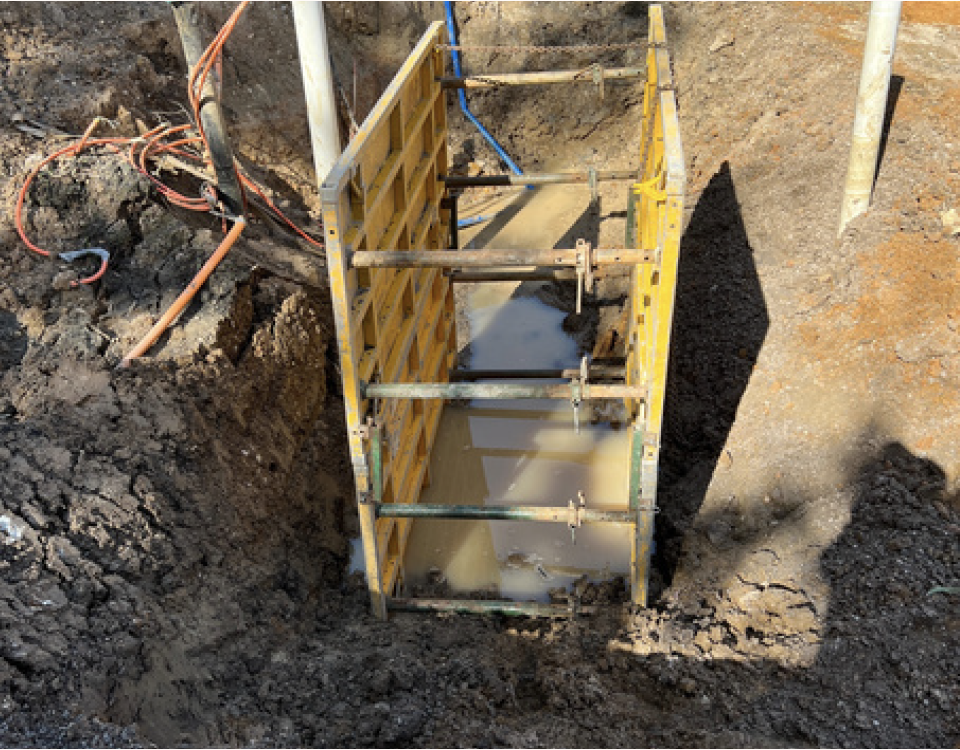
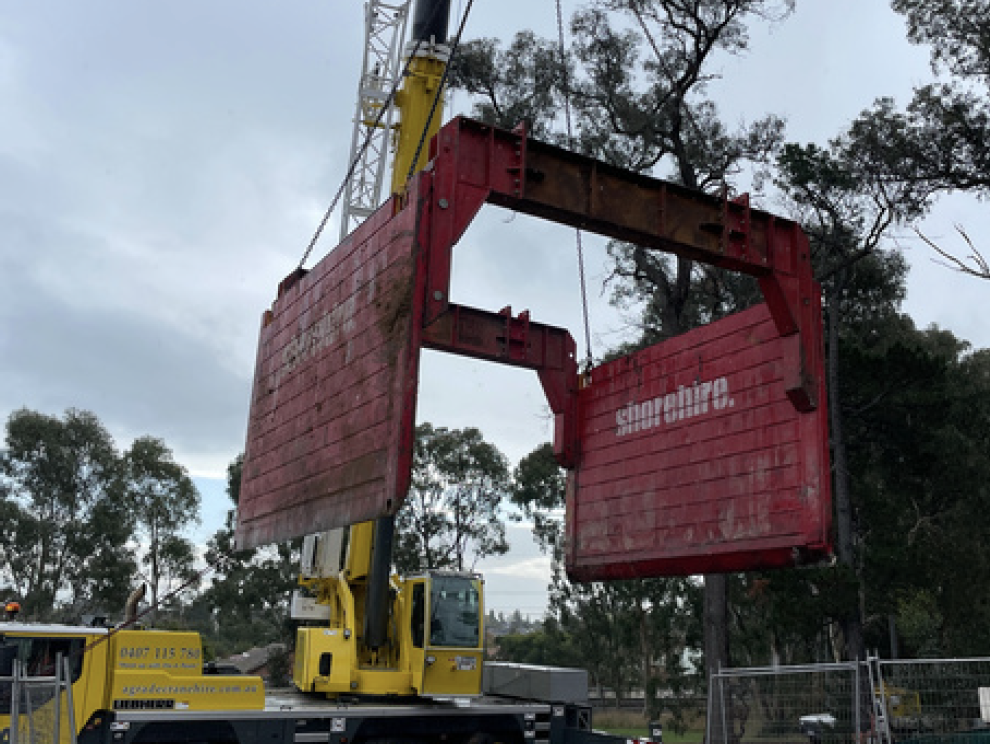
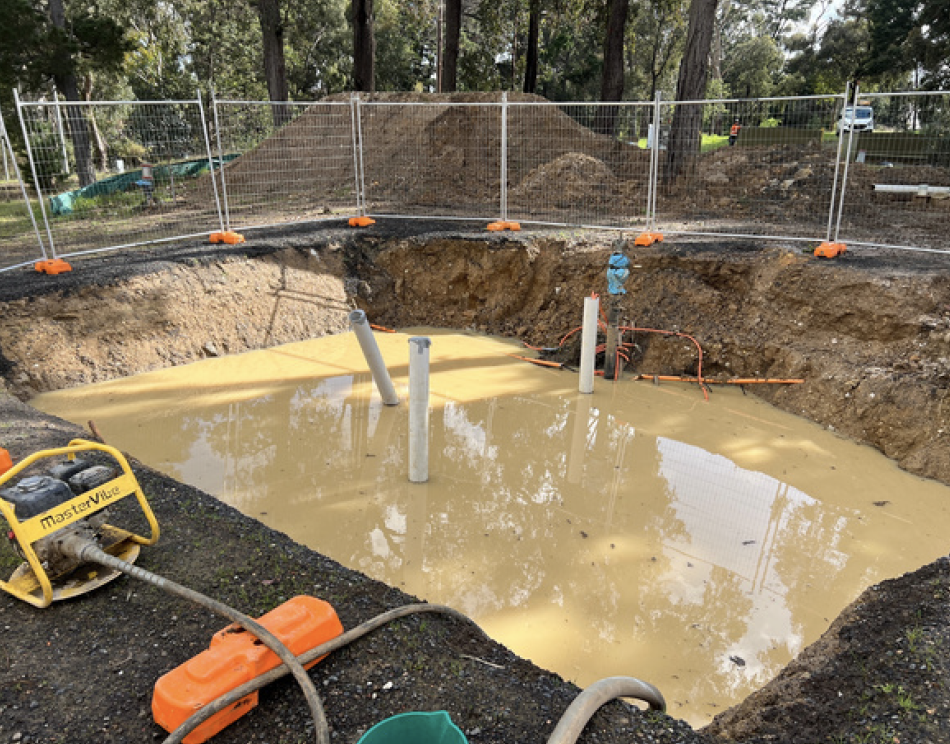



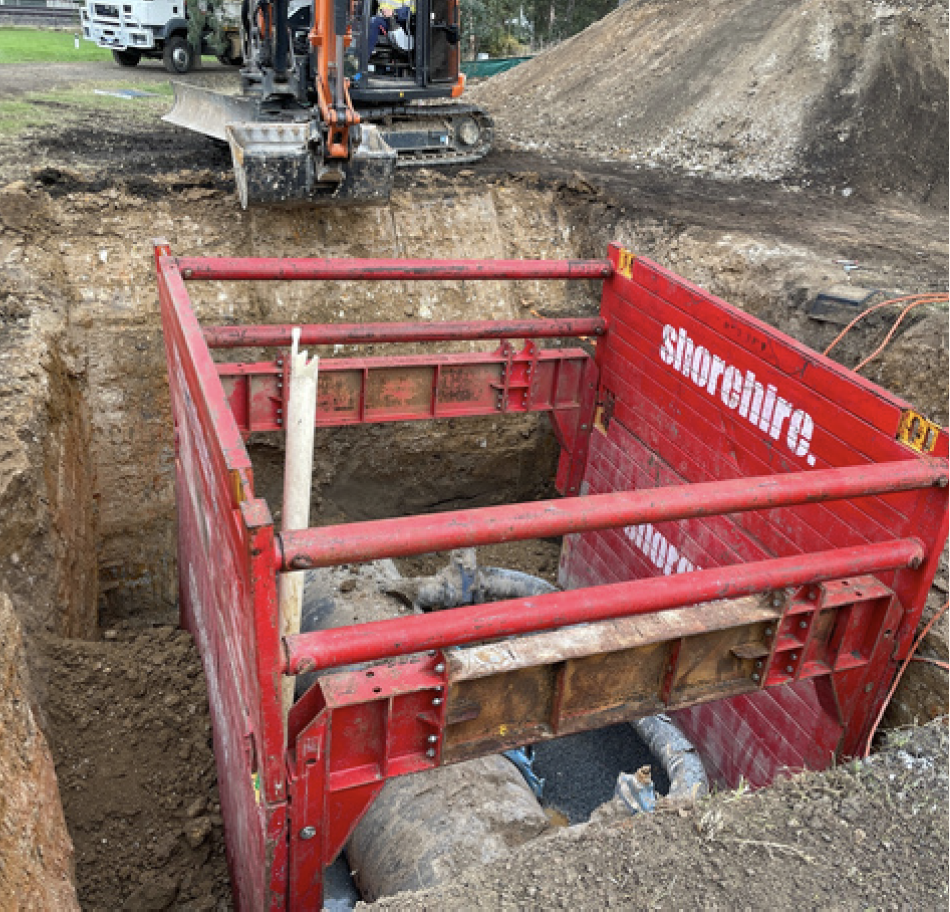
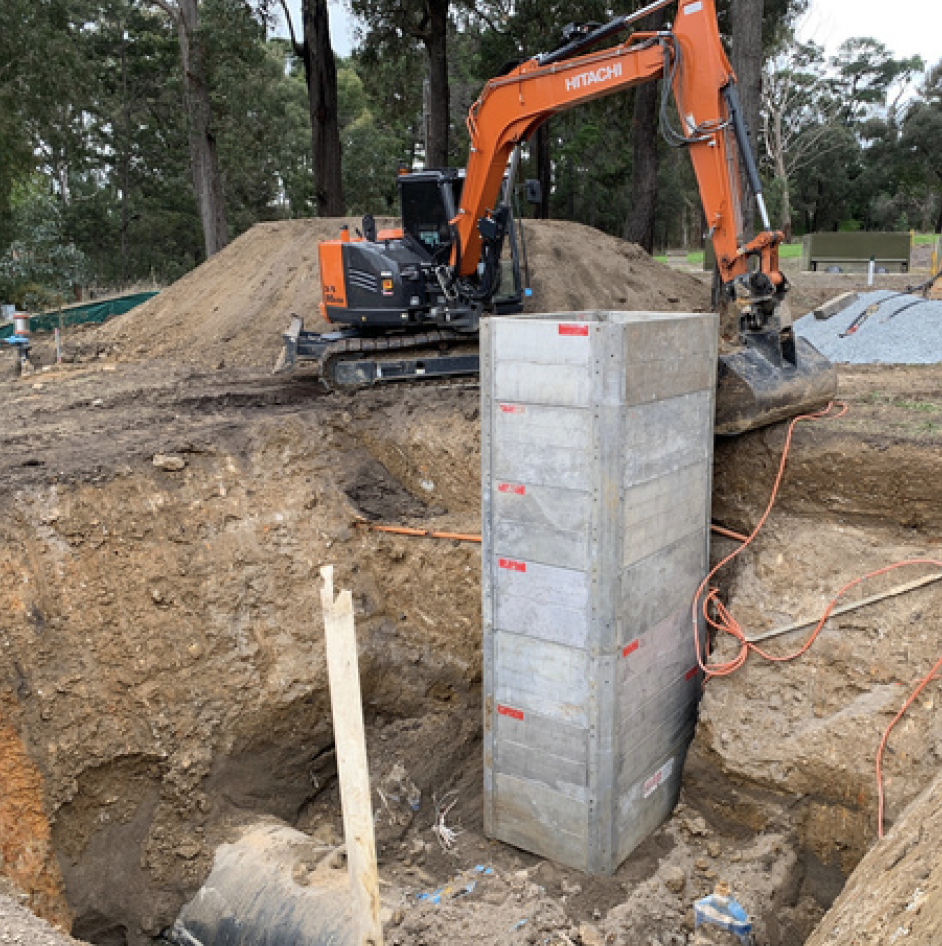

Preston Reservoir divide valve
Project overview
This project involved the safe removal and replacement of a major valve within a live water supply system. Works began with site establishment, including locating underground services, setting out the area, and bringing in mobile equipment.
A 4-metre-deep excavation was completed and secured using a high-clear shield and sump pit for water pump-out and safe staff access. The existing pipe was tested for asbestos, measured, and prepared for valve replacement.
A new valve was transported to site, checked against design specifications, and installed in place of the existing one. The installation included weld band placement, pressure testing, coating, and wrapping. Components were reassembled with proper torque checks and alignment.
After removing the safety shield, the area was backfilled and stabilised with sand to support the valve. Final works included installing a valve cover and restoring the site with topsoil and seeding.
Risk Management
Key risks, including underground services and deep excavation, were safely managed through Non-Destructive Digging (NDD) and compliant shielding, ensuring uninterrupted water supply throughout the project.
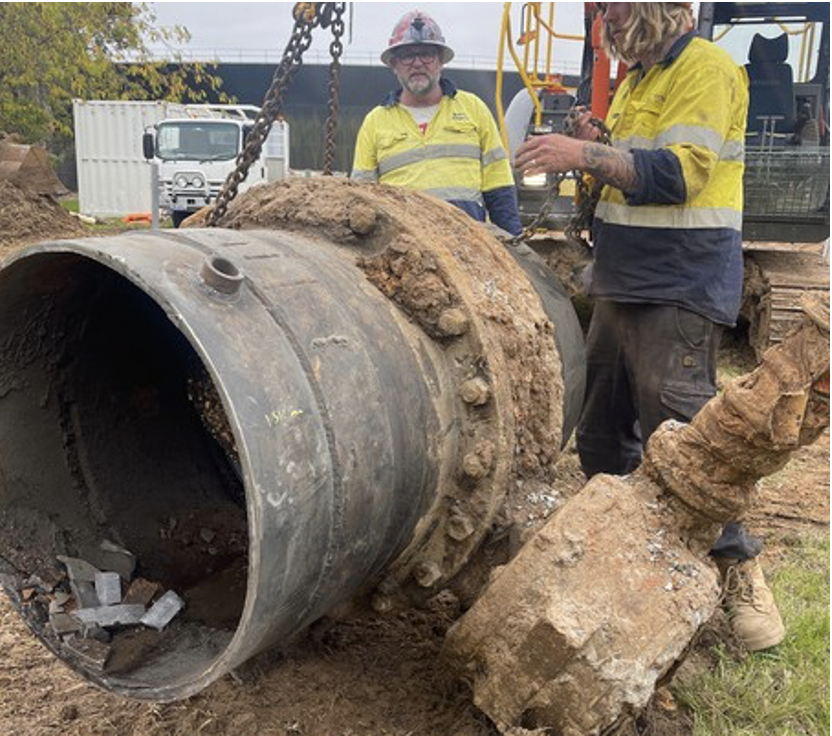
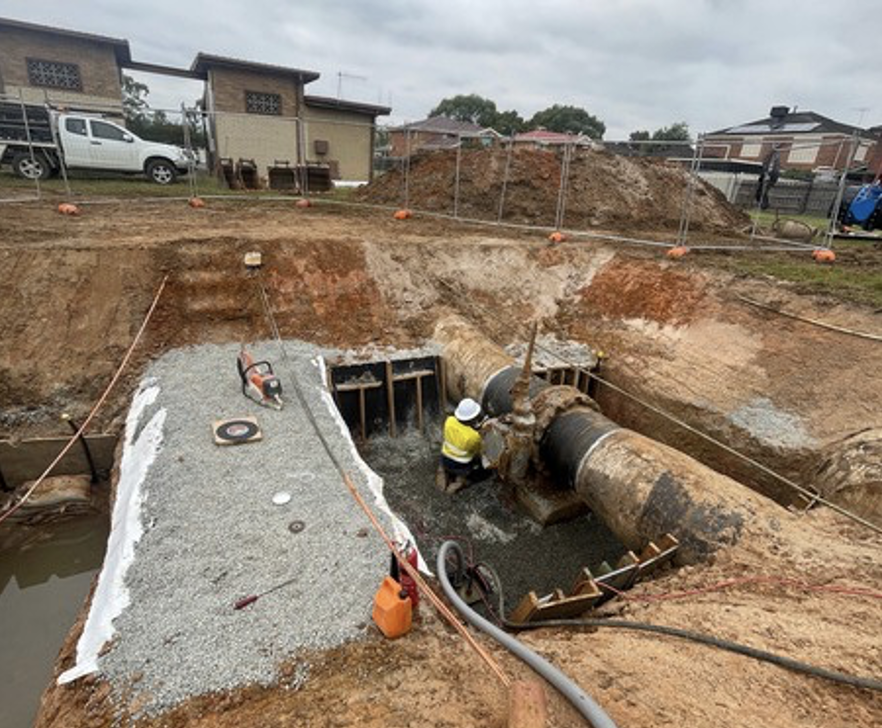

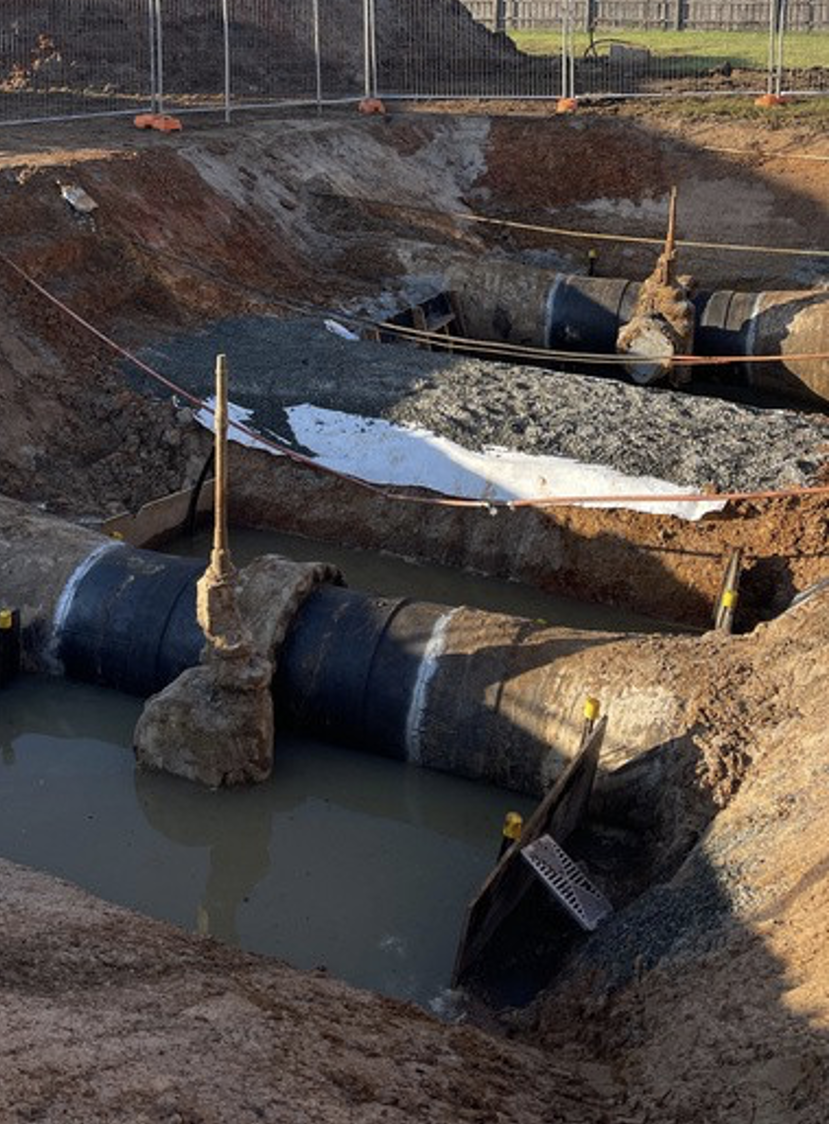
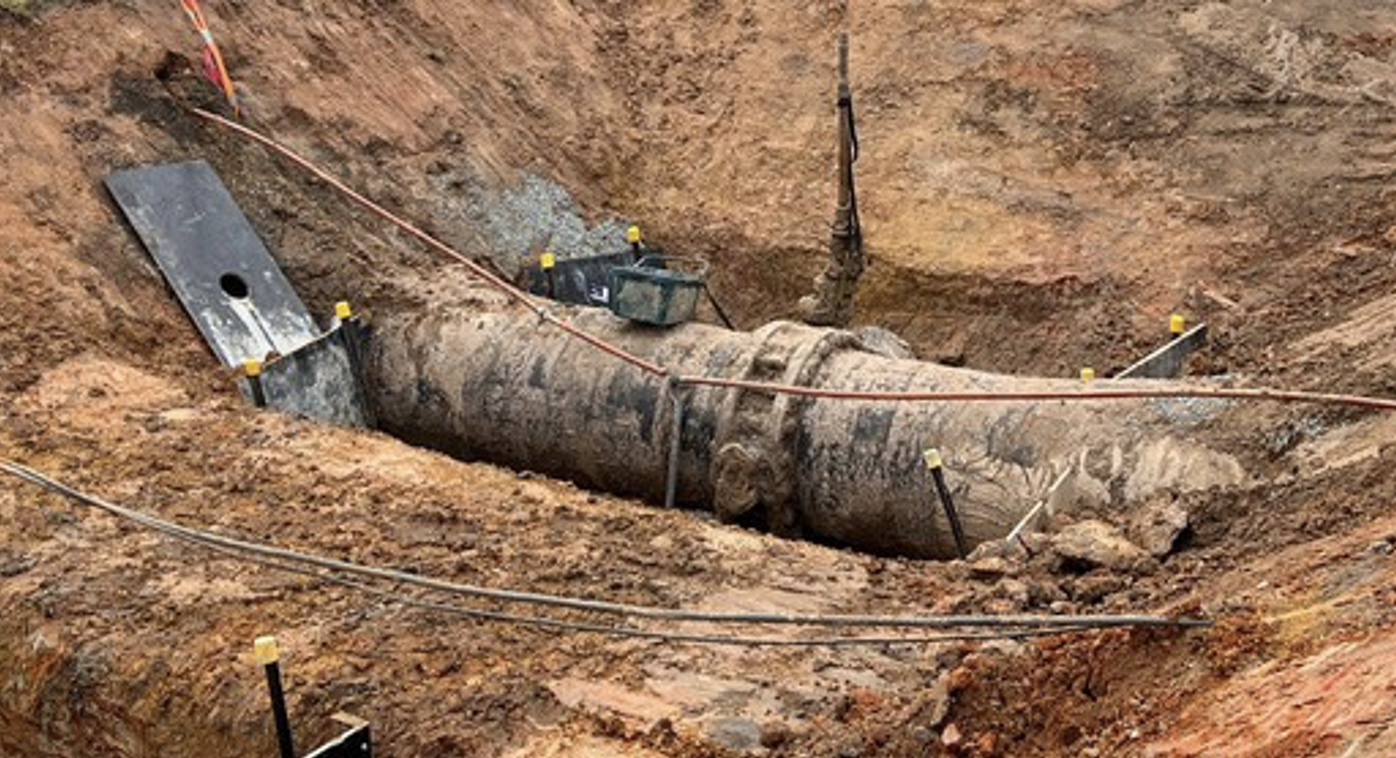

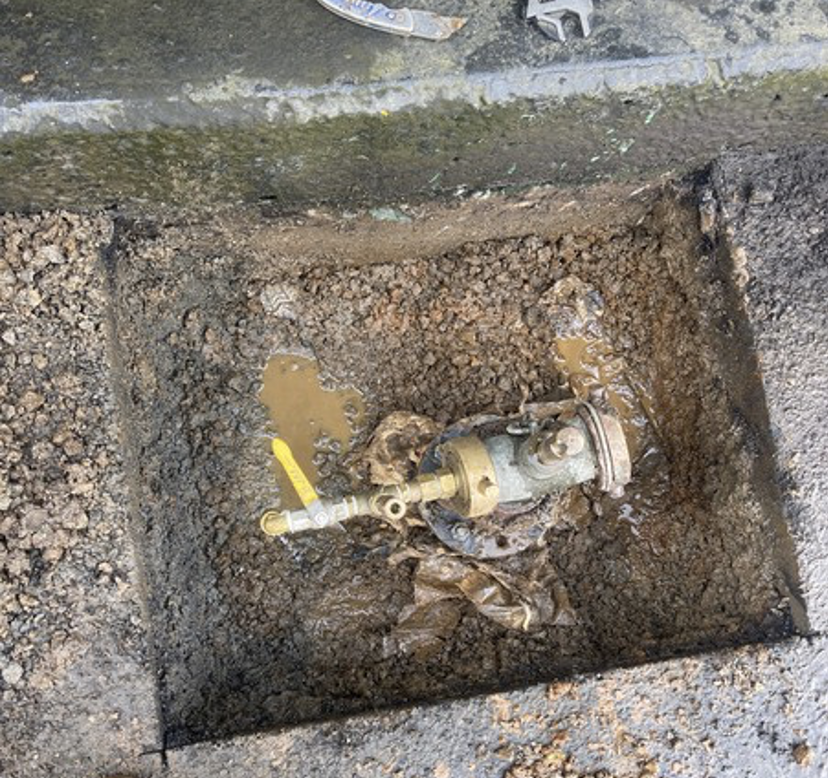
dandenong reservoir
Project overview
This project involved the full replacement of Valve DV. Works began with the careful location of surrounding services, followed by excavation around existing assets, including high-voltage power lines.
The existing pipework was stripped of its coating and sent for testing to ensure safety and compliance. Once cleared, the old valve assembly was cut out and removed from the site.
A new valve assembly was installed, with all components carefully lifted into place. Weld bands were fitted and fully welded, ensuring a secure and durable connection. All new pipework and weld areas were coated with a two-pack epoxy for corrosion protection, and all flanged joints were wrapped with a dense four-part system to provide additional sealing and protection.
Once the new system was in place, the area was backfilled to finished surface level. The project concluded with the completion of the Inspection and Test Plan, along with updated redline markups to reflect the as-constructed drawings.
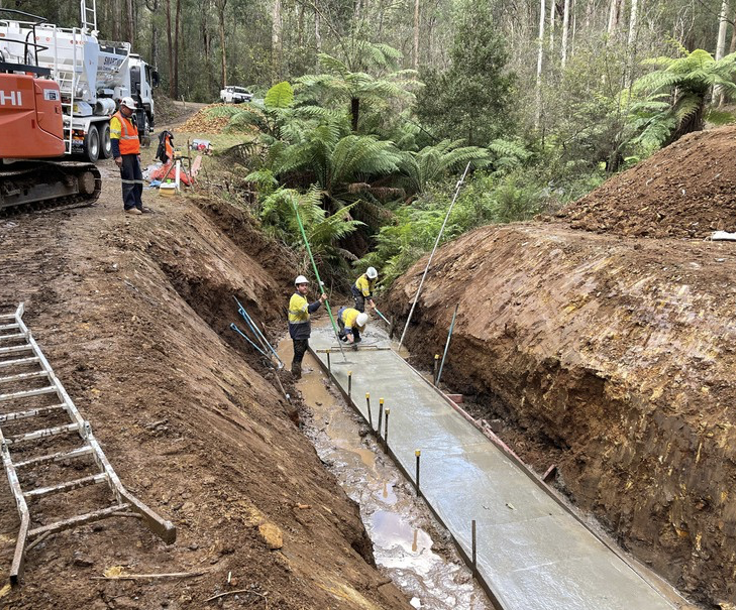
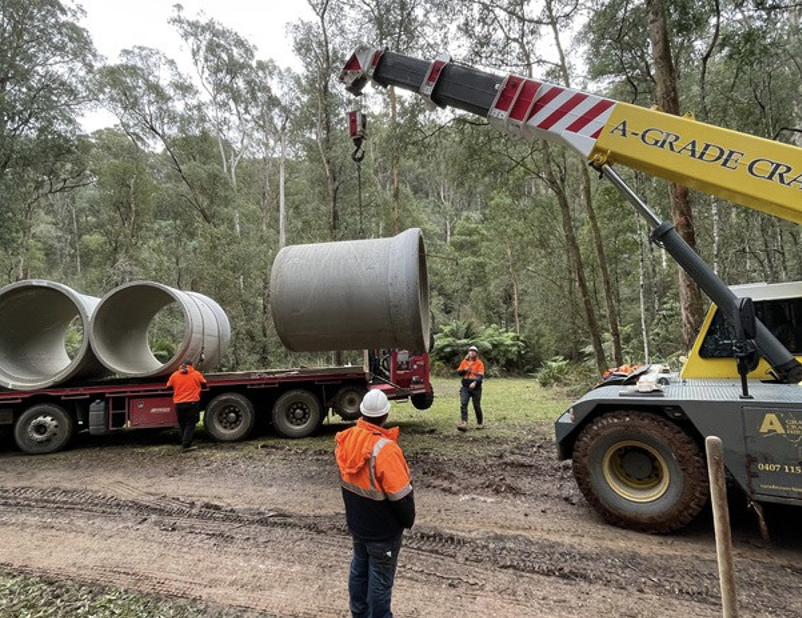
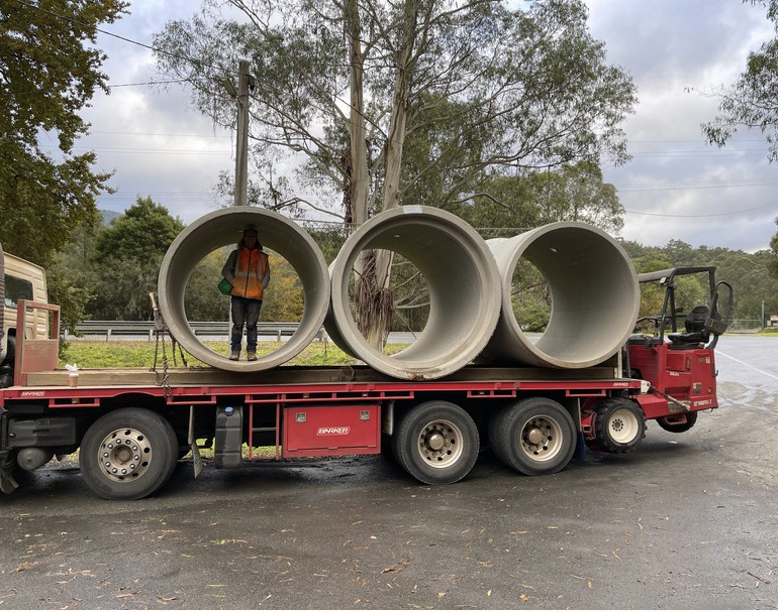
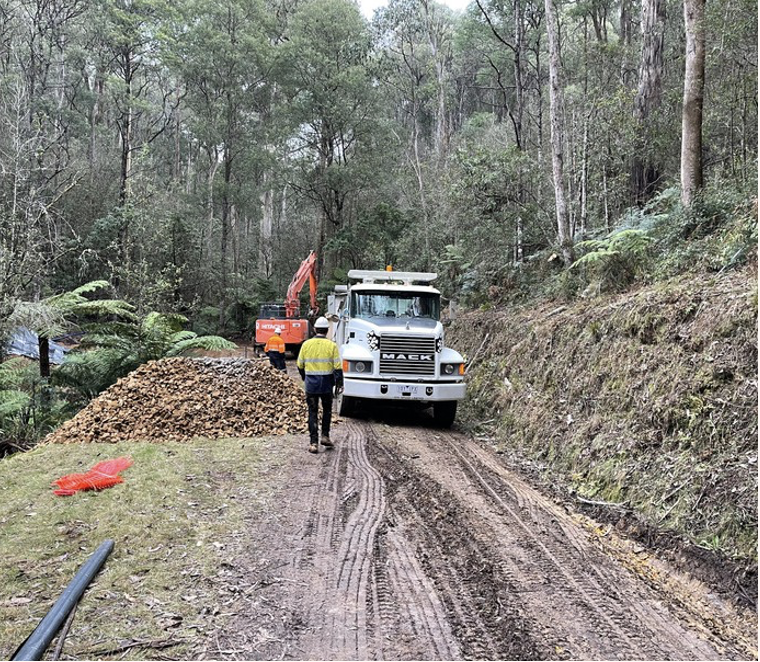
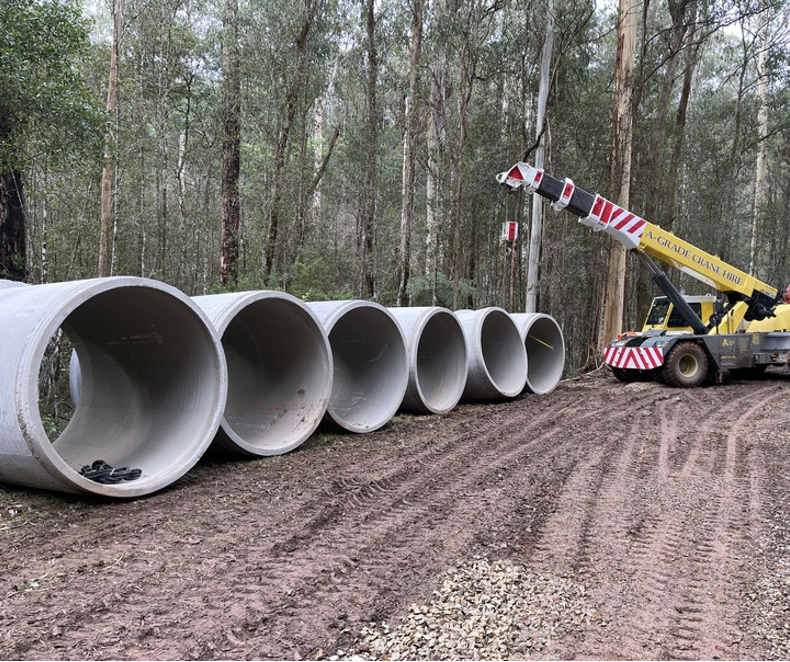
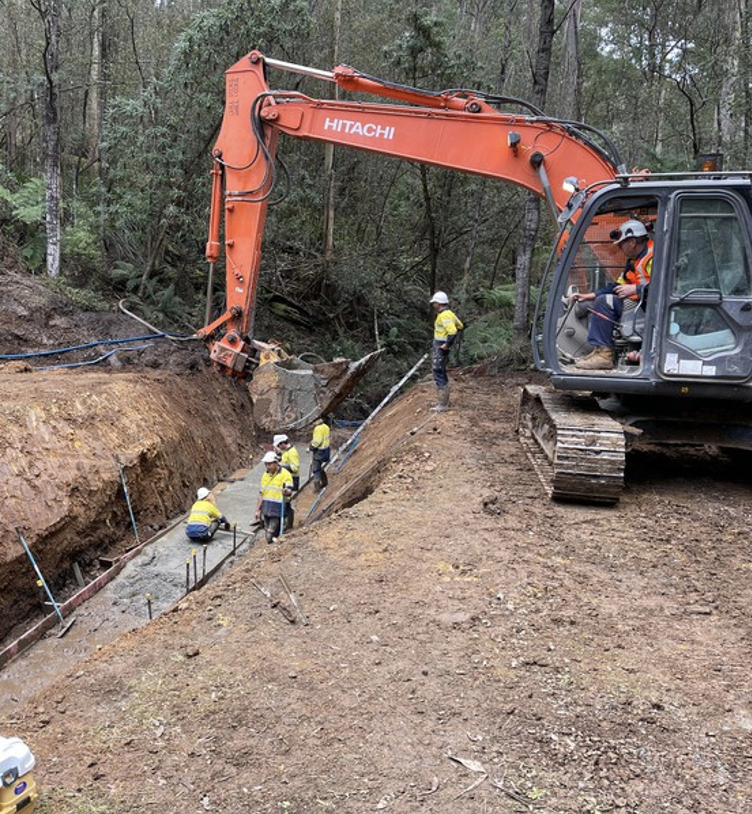

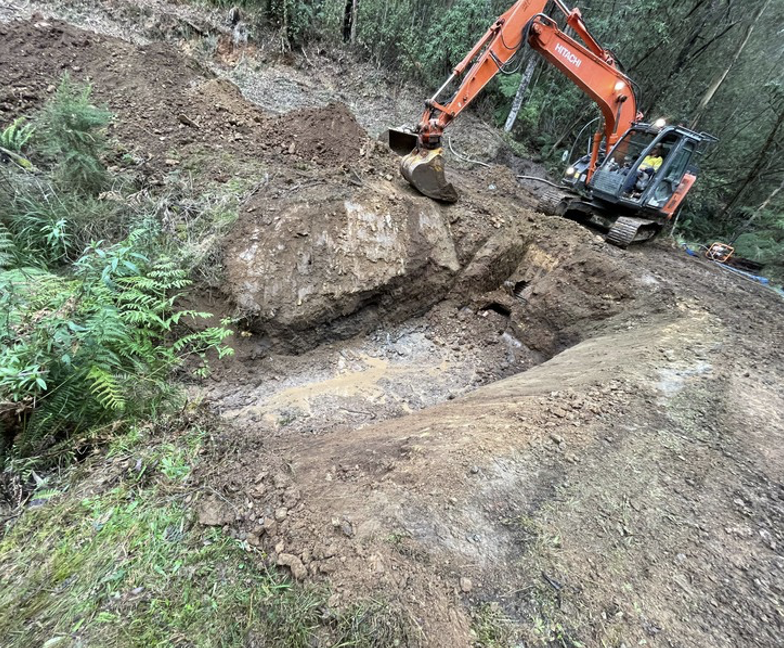
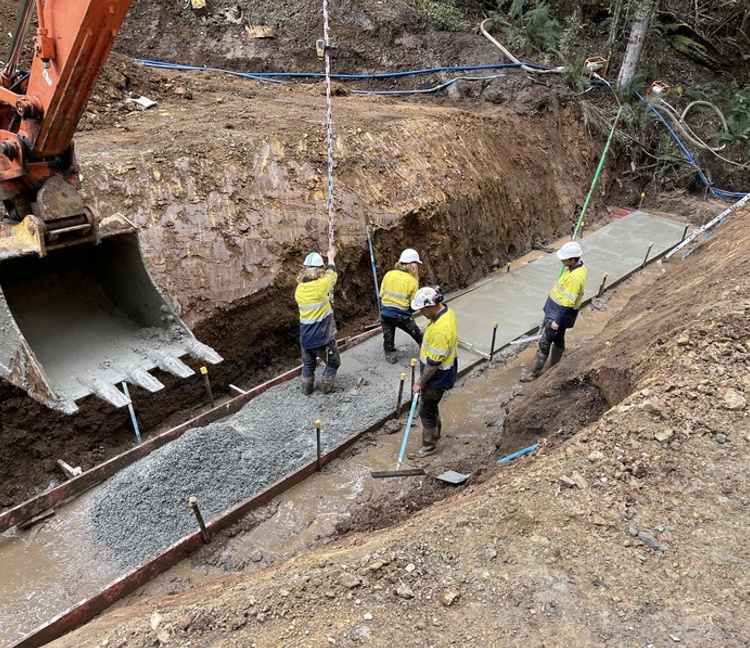
reefton culverts
Project overview
Supply, delivery, transport and installation of underground stormwater drains, referred to as relief culverts in this guideline, together with the construction of end walls, silt traps.
All Plant equipment and materials had to be tracked in as access was limited.
Approach
Bpc planned to use a Franna with a dogman to install pipework as each piece weigh approx 4.8ton on a concrete blinding base.
With our prev experience in waterways old culverts have a poor base. The upgrade with a blinding base keeps pipes aligned and is a cleaner way to work while haunching the base of the pipe to approx 3rd of the pipe with 3% stab sand and backfill the rest of the way with site gained dry material.
Outcomes
Due to weather conditions eg Rain and the hazard of Wind with the trees in the work area - the project has been put on hold until the area dried out.
Risks
Weather conditions are severe - the ground conditions are not favourable if wet ans with such a thick tree canopy in the area the risk of trees falling is high.
Lessons learned
Having knowledge of the site - qualified staff with a history Working alongside MW operations and constantly keeping in communication with them.
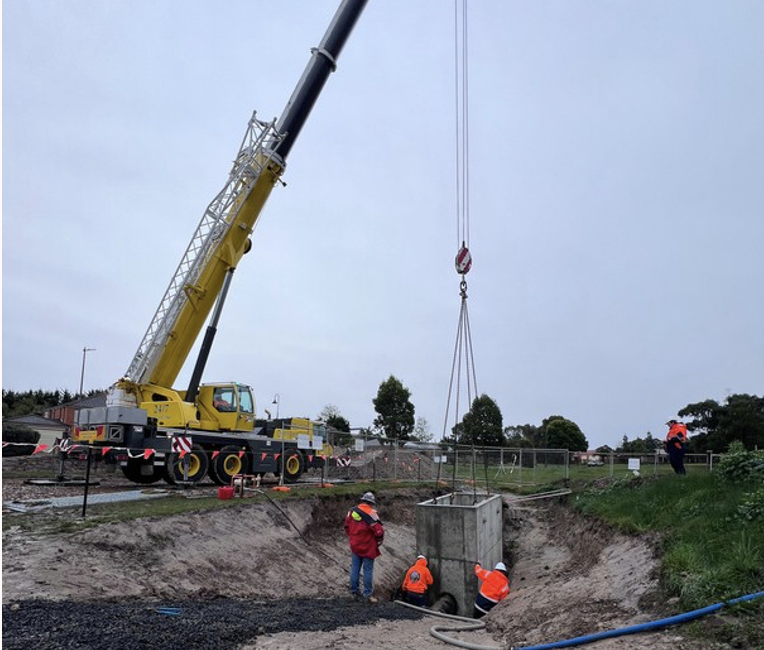
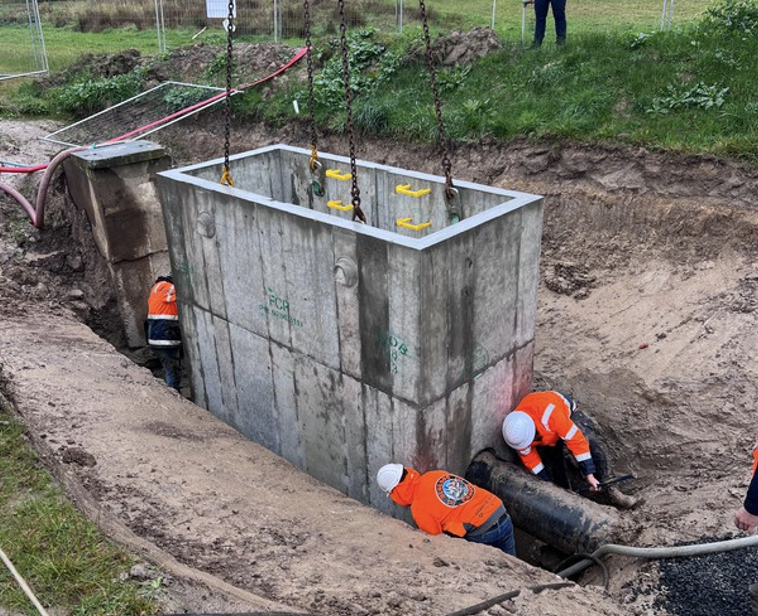
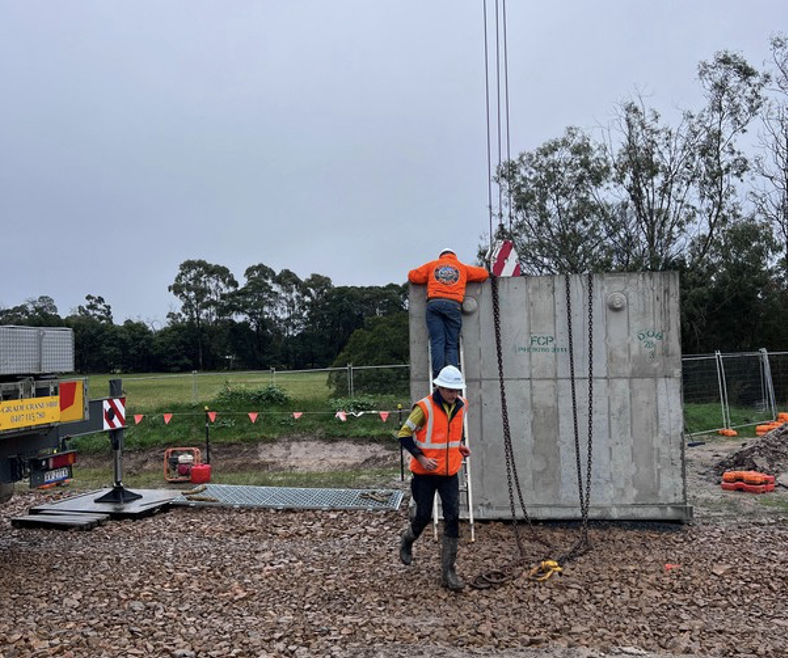

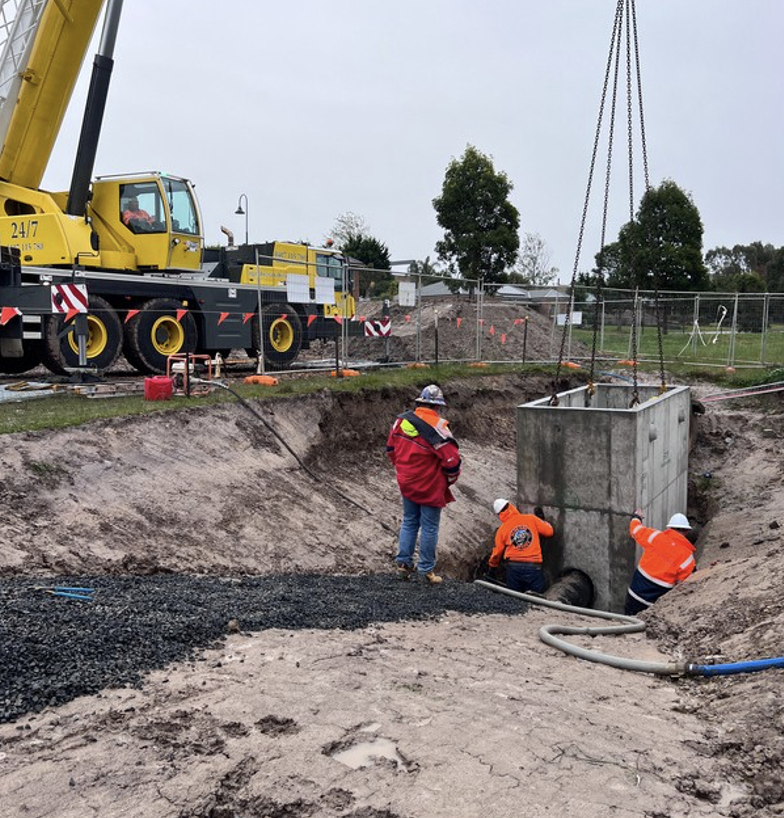
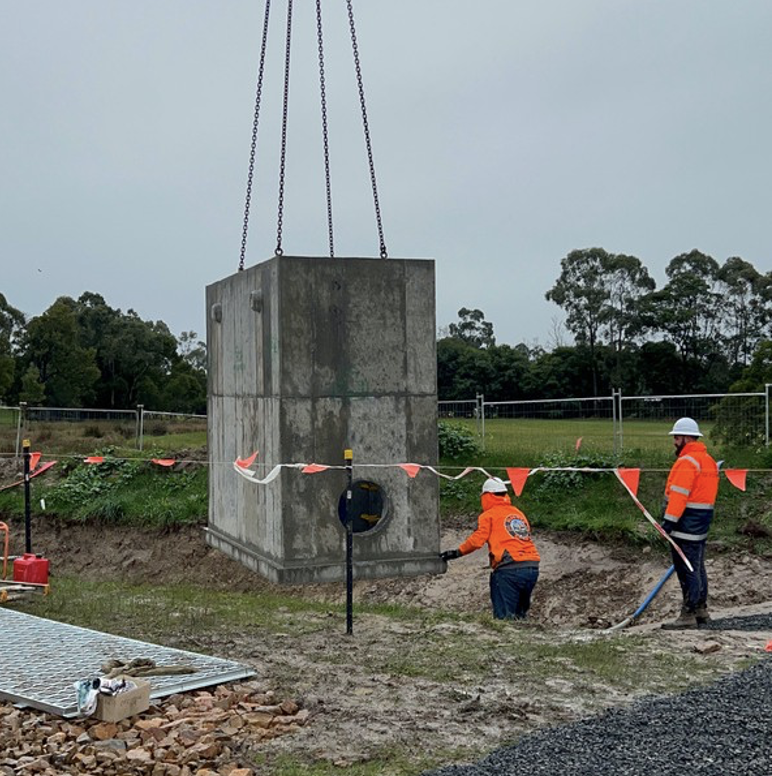
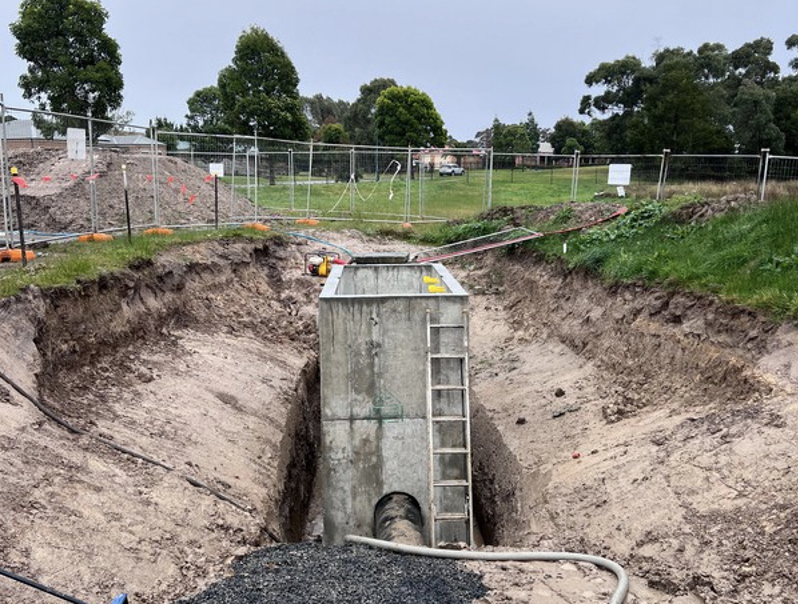
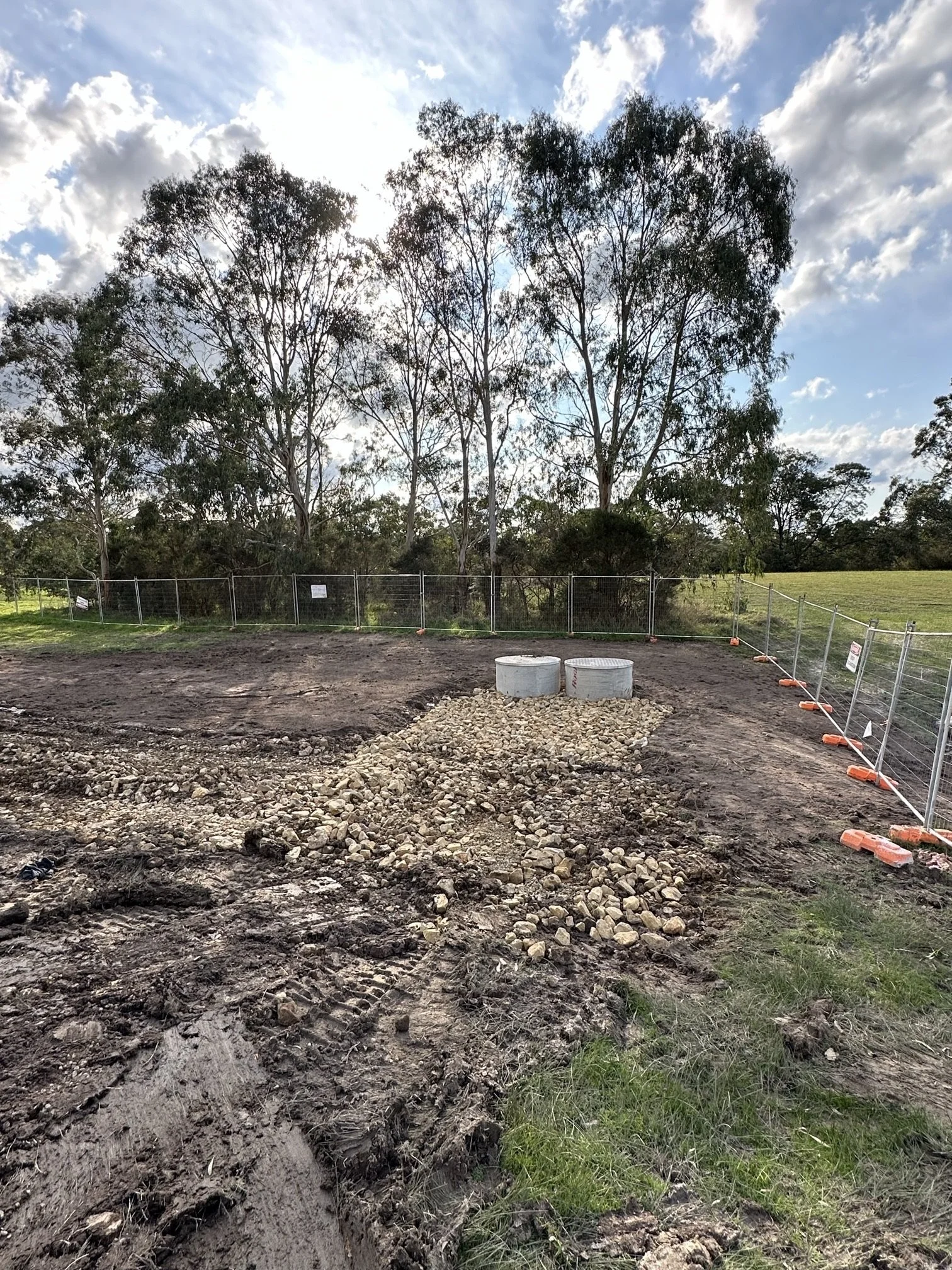

cardinia creek dwarf galaxia refuge pond
Project overview
This project focuses on improving habitat for the threatened Dwarf Galaxia (Galaxiella pusilla) within the Cardinia Creek Retarding Basin. To support the long-term survival of this vulnerable freshwater species, a drought refuge pond will be constructed. These ponds provide critical year-round shelter in the event of low water flow or drought, replicating the shallow, still, and vegetation-rich environments where Dwarf Galaxias naturally thrive.
Project objectives
The goal is to create a stable and suitable aquatic habitat to help prevent the extinction of the Dwarf Galaxia in this region.
Scope of works
All works will follow detailed design drawings and comply with the Cultural Heritage Management Plan. Temporary access and laydown areas will be established, and protective fencing installed around sensitive zones.
Sediment and erosion controls will be implemented, and stormwater will be temporarily diverted during construction. The pond and outlet channel will be excavated, with topsoil carefully removed and stockpiled to preserve the site’s integrity. Flow diversion pits, filter pits, drainage pipework, and a concrete weir will be installed to manage water flow.
Rock beaching and geofabric will stabilise the pond structure, and topsoil will be applied to encourage revegetation. All temporary infrastructure and materials will be removed upon completion, with access tracks and disturbed areas reinstated using topsoil and grass seed where required.
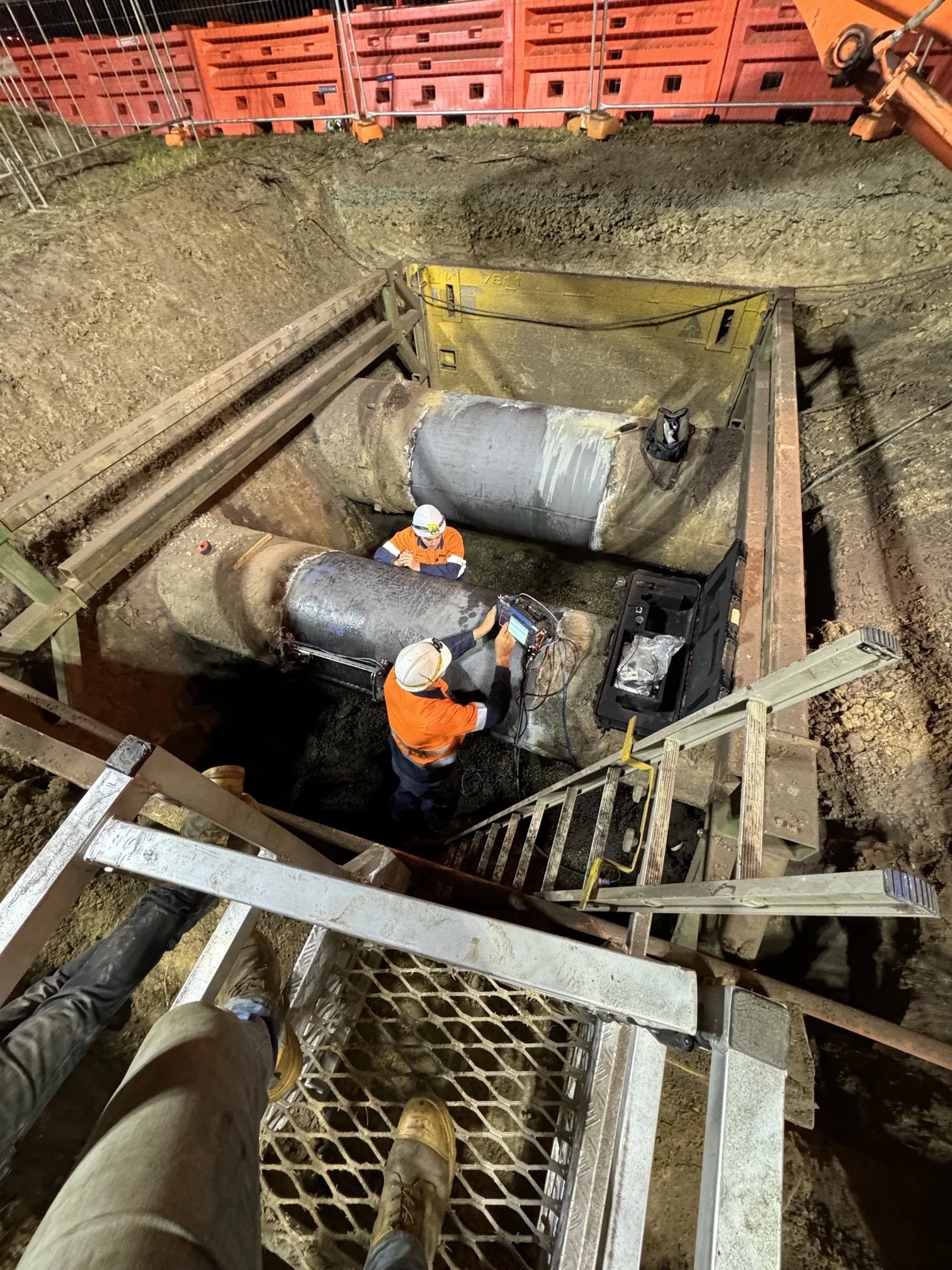
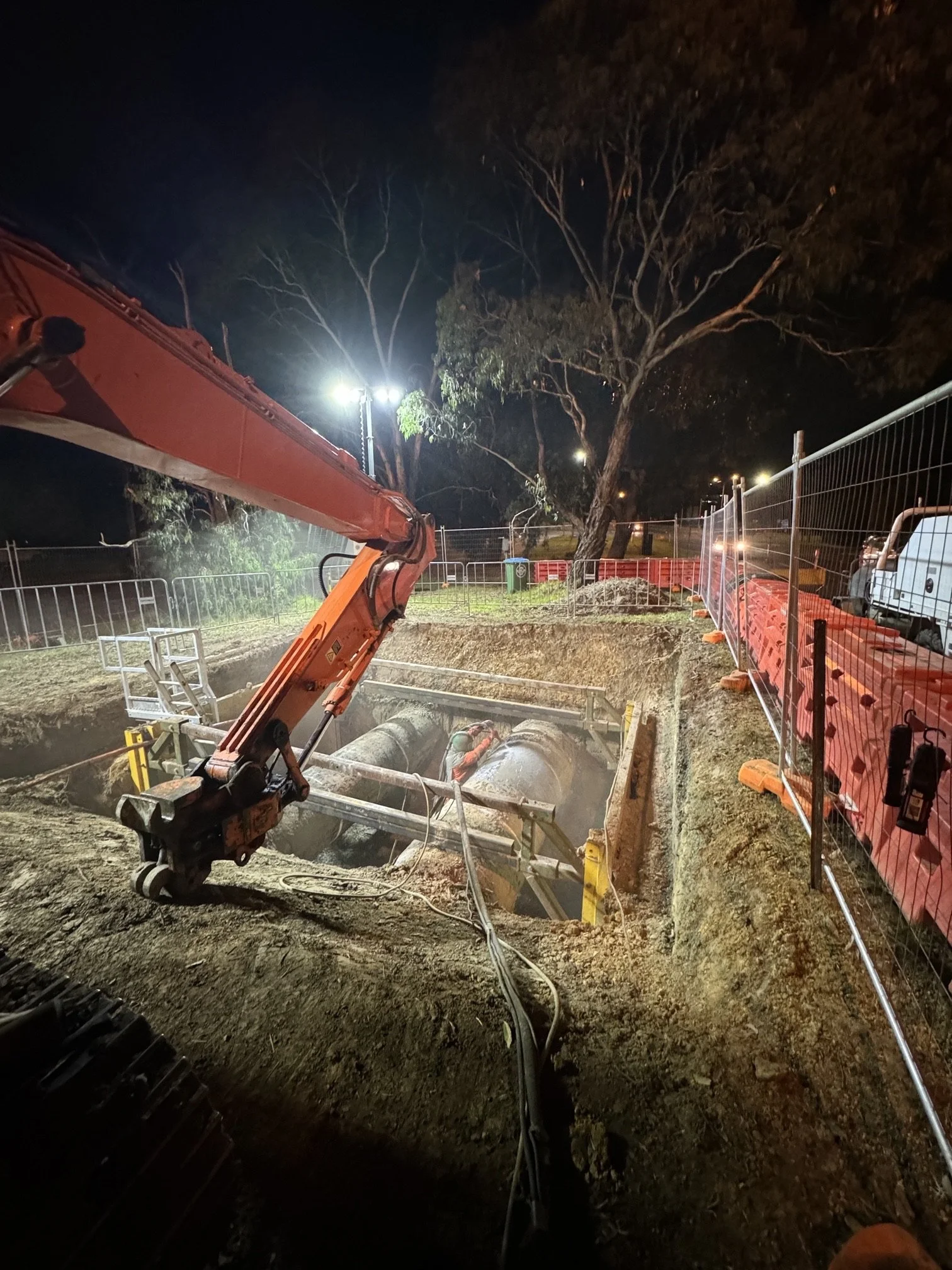
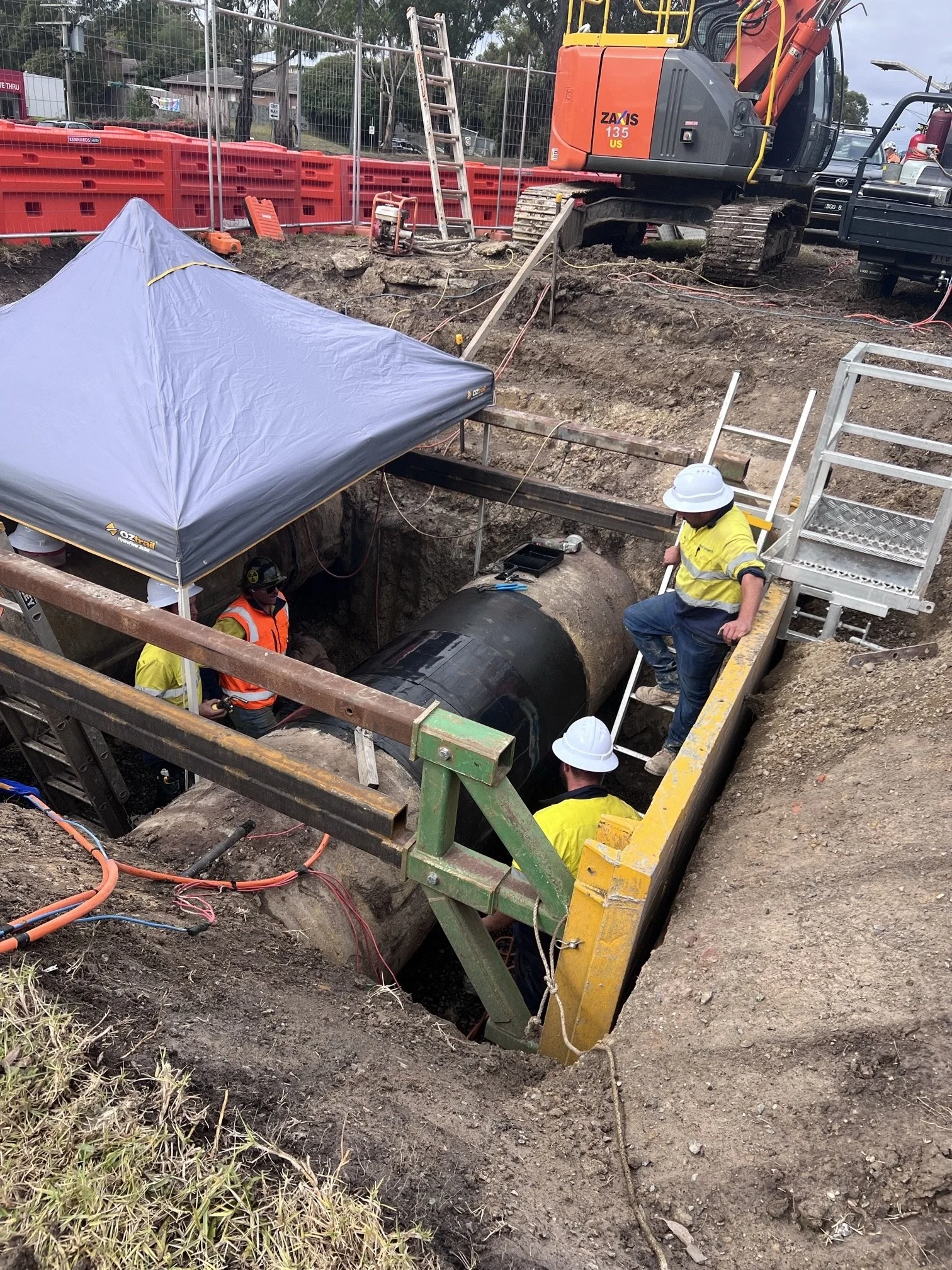
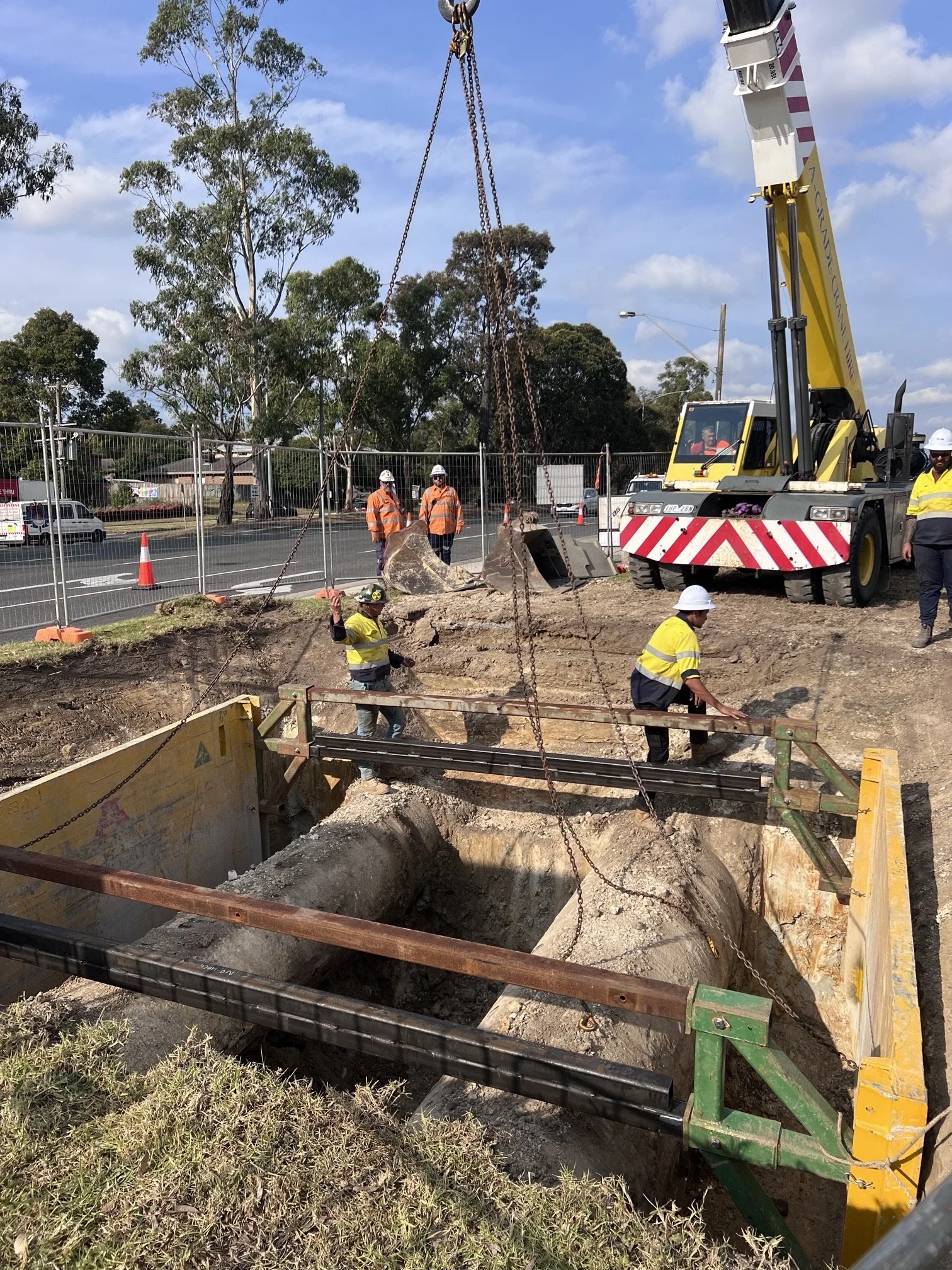
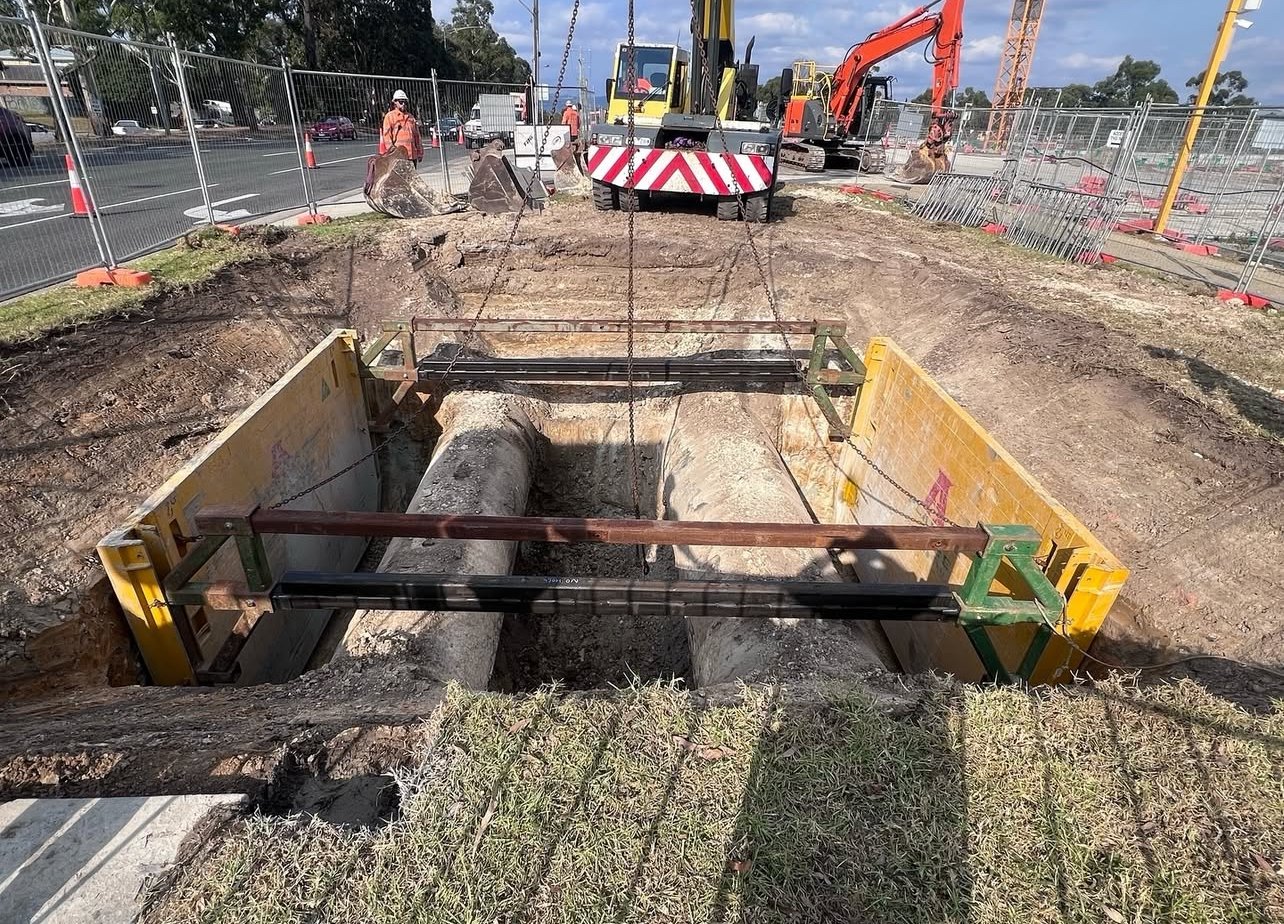
Pipe scanning night works
Project overview
We completed a series of commercial pipe scanning works as part of scheduled maintenance. The scope involved non-invasive scanning of concrete slabs and structural elements to accurately locate and map existing in-slab pipework, utilities, and potential obstructions. This was essential for ensuring the safety and precision of upcoming core drilling and service installations.
The scanning was carried out using high-frequency ground-penetrating radar (GPR) and electromagnetic location (EML) technology to deliver detailed imaging without disruption to the building’s structure or daily operations.
Due to access restrictions and operational requirements during business hours, a portion of the work was completed overnight. This required additional planning and provisions, including increased lighting, adjusted safety protocols, and coordination with site management to maintain compliance with noise and access restrictions.
All scanning works were completed successfully, with detailed reporting and marked-up site maps handed over to the client for reference during future construction and fit-out phases.
